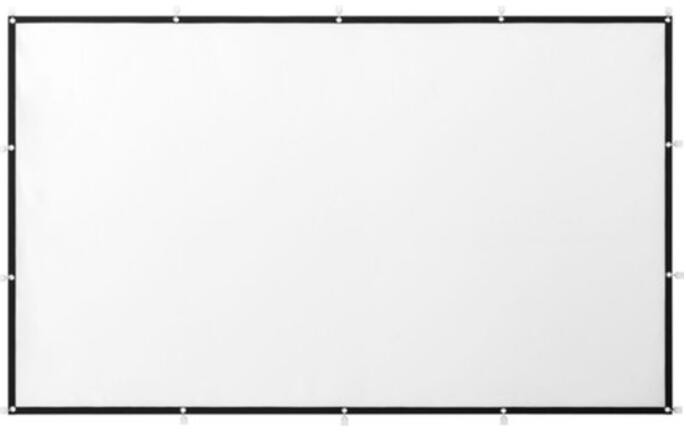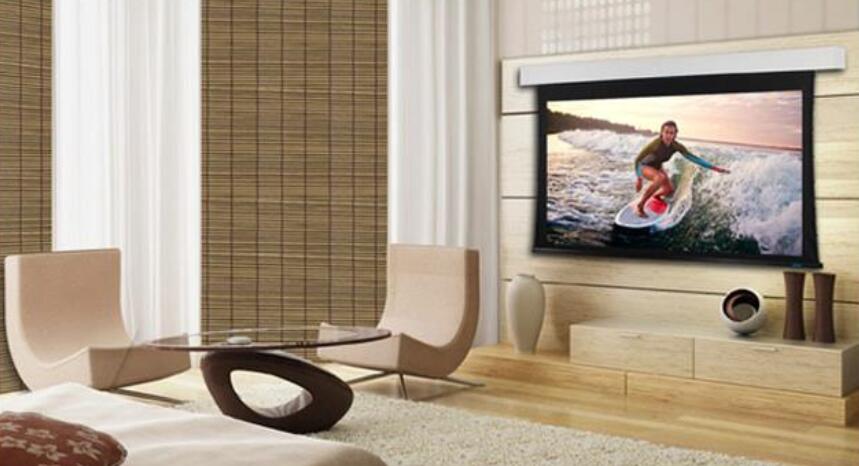When setting up a home theater or a presentation system, one of the most crucial components is the projector screen. The screen plays a significant role in the overall quality of the projected image, which is why it’s essential to choose the right type for your specific needs. In this discussion, we will compare black and white projector screens, delving into their advantages and disadvantages to help you make an informed decision.
Contents
Understanding the Basics
Before diving into the specifics, it’s essential to understand how projector screens work. The primary purpose of a screen is to reflect the light emitted by the projector in a controlled manner. This reflection ensures a clear and bright image for the viewer. Screens are available in a variety of materials, colors, and finishes, which influence the projected image’s quality.
White Projector Screens

White screens are the most common type of projector screens and have been in use for decades. They are made from a matte white material that reflects light uniformly, resulting in an even distribution of brightness across the entire screen. The simplicity and versatility of white screens make them suitable for a wide range of applications, from home theaters to classrooms and conference rooms.
Here are some popular white projector screens available in the market:
- Elite Screens Manual B Series: This screen has a 1.0 gain and is made with a durable PVC material. It also has a black backing to prevent light penetration and has a wide viewing angle.
- Silver Ticket Products STR-169120: This screen has a 1.1 gain and is made with a high-quality vinyl material. It is also easy to assemble and has a wide viewing angle.
- Carl’s Place FlexiWhite Projector Screen Material: This screen material has a 1.1 gain and is made with a flexible PVC material that can be easily mounted. It also hasa wide viewing angle and is suitable for use in a variety of settings.
- Da-Lite Model B with CSR: This screen has a 1.0 gain and is made with a durable vinyl material. It also features Controlled Screen Return (CSR) technology, which allows the screen to retract slowly and smoothly into the case when not in use.
- Stewart Filmscreen Cima Neve: This high-end screen has a 1.3 gain and is made with a proprietary material that provides excellent color accuracy and contrast. It also has a wide viewing angle and is suitable for use in professional settings.
Black Projector Screens

Black screens, also known as ambient light rejecting (ALR) screens, have gained popularity in recent years. These screens are designed to enhance picture quality in environments with ambient light, such as living rooms with windows or bright overhead lights. They are made from a dark, light-absorbing material that reflects light from the projector while rejecting light from other sources.
Here are some popular black projector screens available in the market:
- Elite Screens Sable Frame B2 Series: This screen is made with high-quality materials and has a 1.0 gain. Its frame is made of black velvet, which absorbs light and increases contrast, and it has a wide viewing angle.
- Silver Ticket Products STR Series: This screen has a 1.1 gain and is made with a durable vinyl material. It also has a black velvet frame for increased contrast.
- Carl’s Place FlexiGray Projector Screen Material: This screen material has a 0.8 gain and is made with a flexible PVC material that can be easily mounted. Ithas a wide viewing angle and is suitable for use in a variety of settings.
- Stewart Filmscreen Cima Neve: This high-end screen has a 1.3 gain and is made with a proprietary material that provides excellent color accuracy and contrast. It also has a wide viewing angle and is suitable for use in professional settings.
Comparing Black and White Projector Screens
Brightness and Contrast
The most significant difference between black and white screens is their effect on image brightness and contrast. White screens reflect more light, which results in a brighter image. However, they also reflect ambient light, which can wash out the image and reduce contrast.
In contrast, black screens absorb ambient light and only reflect light from the projector. This results in a higher contrast ratio, producing deeper blacks and more vibrant colors. However, the darker material means that the overall image brightness is often lower than that of a white screen.
Viewing Angles
Another crucial factor to consider is the viewing angle, which refers to the range of positions from which the image on the screen remains clear and undistorted. White screens generally have wider viewing angles, allowing for a more flexible seating arrangement or larger audiences.
Black screens, on the other hand, have narrower viewing angles due to their light-absorbing properties. This means that viewers may need to sit directly in front of the screen to enjoy the best image quality.
Ambient Light Performance
As mentioned earlier, black screens are specifically designed to reject ambient light, making them ideal for environments with significant light sources, such as windows or bright overhead lights. In these settings, a black screen can significantly enhance image quality by maintaining high contrast levels and preventing washed-out colors.
On the other hand, white screens perform best in controlled lighting conditions, such as dedicated home theaters or presentation rooms with minimal ambient light. In these settings, a white screen will provide a uniformly bright image with no need for the light-rejecting properties of a black screen.
Price and Availability
White screens tend to be more affordable and widely available compared to black screens. This is primarily due to their simpler construction and the fact that they have been the standard for projector screens for many years.
Black screens, being a more specialized product, typically come at a higher price point. However, their unique light-rejecting properties might justify the additional cost for users who need to contend with ambient light.
Conclusion
When choosing between a black and white projector screen, it’s essential to consider your specific needs and environment. White screens are versatile, affordable, and suitable for controlled lighting conditions, while black screens excel in environments with ambient light but may have a higher price point and narrower viewing angles.
Ultimately, the best projector screen for your setup will depend on factors such as your room’s lighting conditions, the size of your audience, and your budget. By understanding the advantages and disadvantages of both black and white screens, you can make an informed decision that will provide you with the best possible viewing experience.